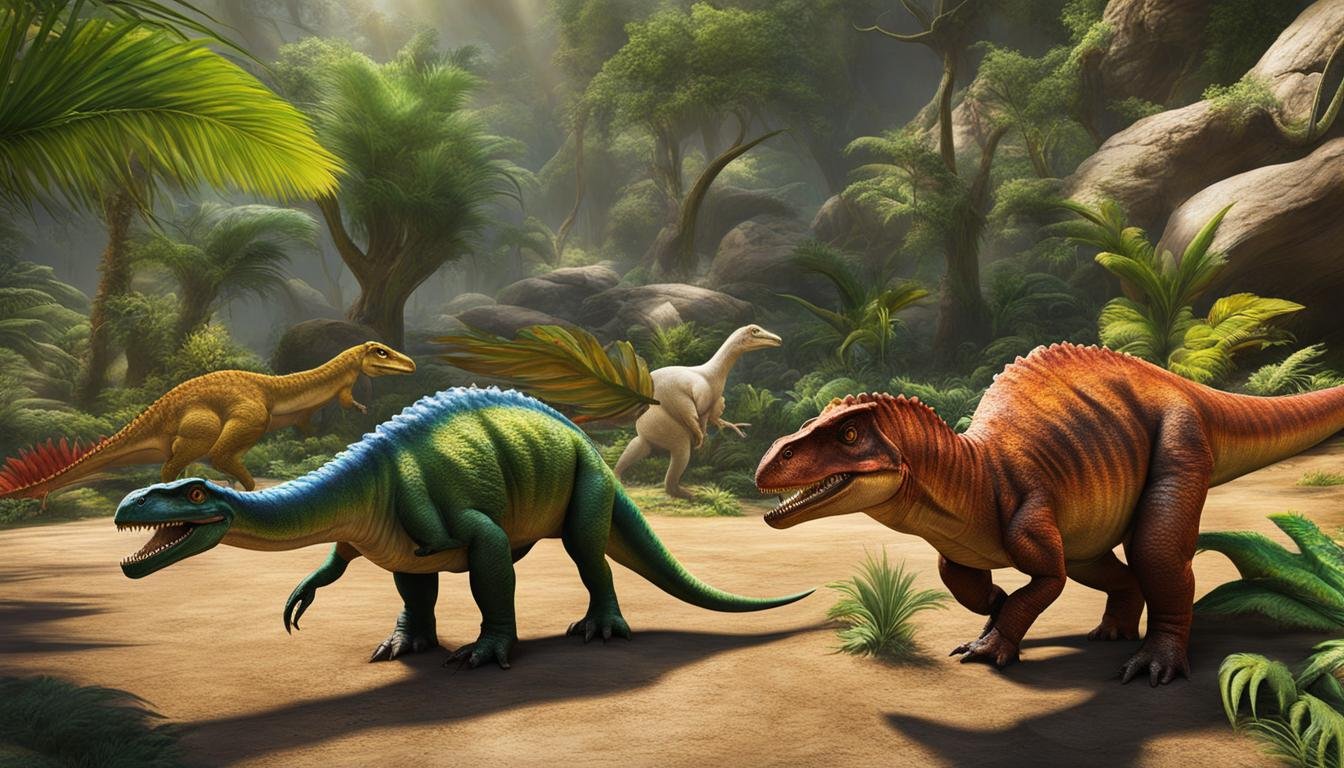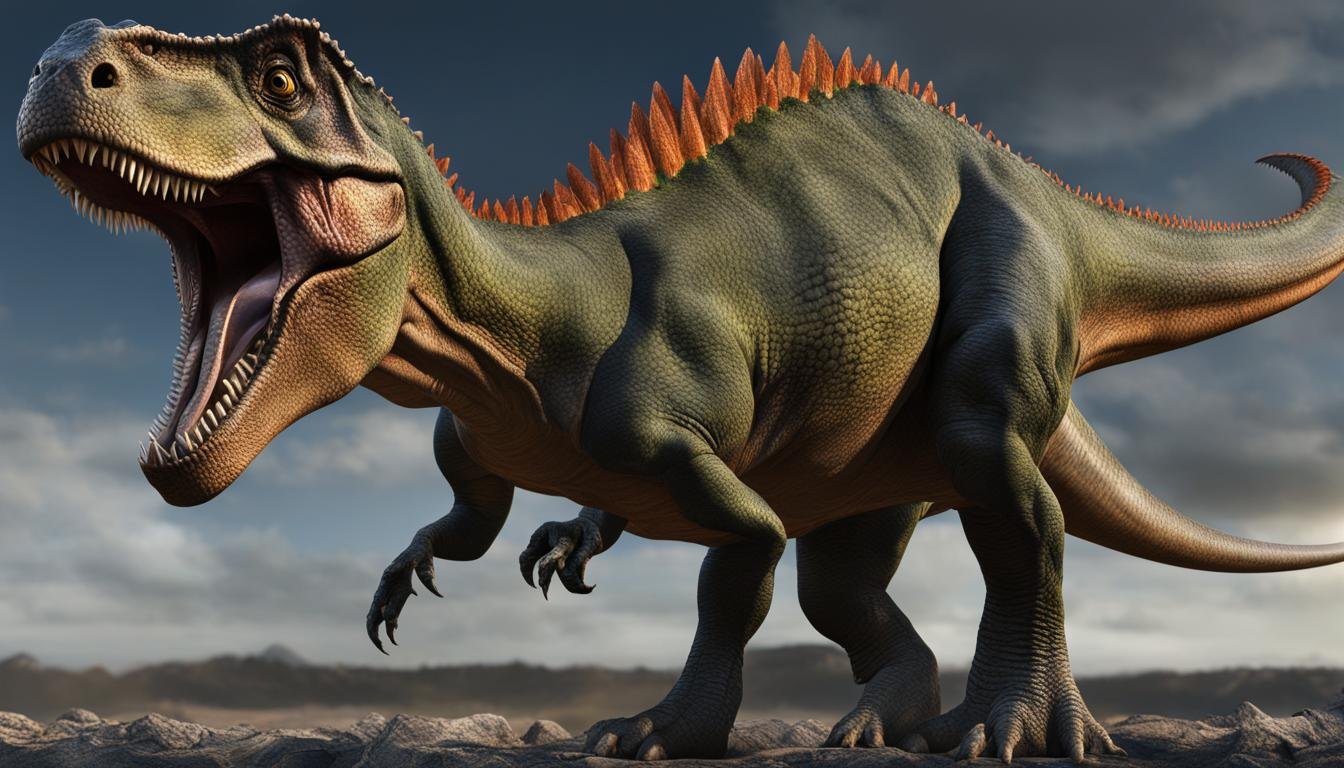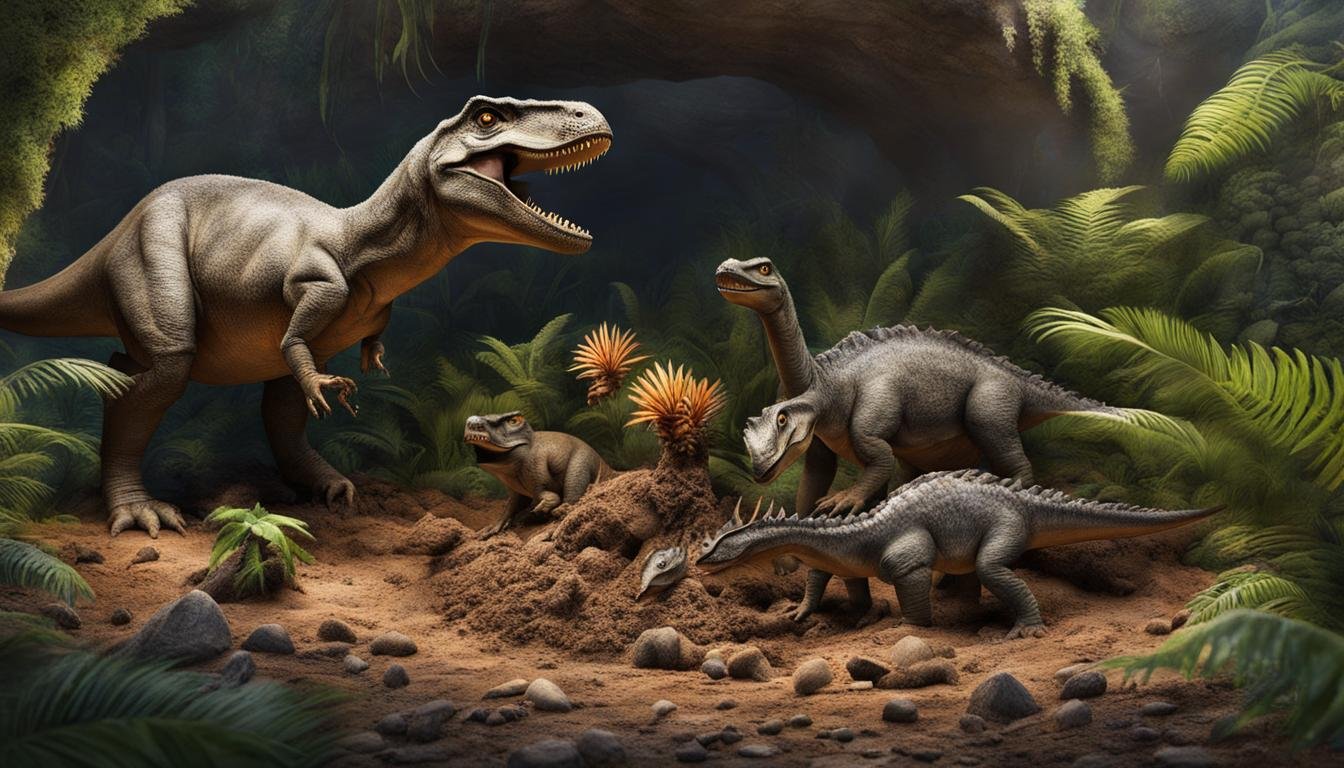Dinosaurs, the magnificent creatures that once roamed the Earth, had fascinating reproductive strategies. Unlike mammals, dinosaurs did not provide parental care to their offspring. Instead, they reproduced by laying eggs, with newborns hatching from these eggs.
One key piece of evidence for this egg-laying behavior is the presence of medullary bone in female dinosaurs. This specialized bone, similar to that found in modern-day birds, is used in the production of eggshells.
The exact details of dinosaur mating behavior are still the subject of scientific study. Different species of dinosaurs had varying reproductive strategies, and paleontologists continue to uncover new insights into their fascinating reproductive biology.
| Main Point | Description |
|---|---|
| Egg-Laying Reproduction | Dinosaurs primarily reproduced by laying eggs, and many species did not provide extensive parental care. |
| Evidence of Egg-Laying in Medullary Bone | The presence of medullary bone in female dinosaurs serves as an indicator of egg-laying behavior. |
| Research on Mating Behavior | The mating behavior of dinosaurs is a subject of ongoing scientific study. |
| Variation in Reproductive Strategies | Different dinosaur species exhibited a variety of reproductive strategies. |
| Advancements in Reproductive Studies | Paleontologists are continually making new discoveries that shed light on the reproductive habits of dinosaurs. |
Dinosaur Nesting Behavior
One intriguing aspect of dinosaur reproduction is their nesting behavior. Fossil evidence suggests that some dinosaurs, including hadrosaurs, created nesting grounds where they laid their eggs. These nesting sites, found in both upland and lowland areas, provide valuable clues about their egg-laying patterns. However, scientists are still working to understand the factors that influenced their nesting choices.
While dinosaur eggshells are rare in the fossil record, the remains of young hadrosaurs are more commonly found. This suggests that dinosaurs may have provided some form of parental care to their offspring after hatching. The exact nature of this care is still uncertain, but it is likely that the parents played a role in protecting and nurturing their young.
| Dinosaur Species | Nesting Grounds |
|---|---|
| Hadrosaurs | Upland and lowland areas |
| Tyrannosaurs | Not yet determined |
| Sauropods | Islands and coastal regions |
In addition to hadrosaurs, other dinosaur species may have exhibited nesting behaviors. Further research and discoveries will continue to enhance our understanding of dinosaur nesting behavior and shed light on the intricacies of their reproductive strategies.
Dinosaur Courtship Behavior and the Evolution of Dinosaur Reproduction
Dinosaurs, the remarkable ancient creatures that once roamed the Earth, exhibited intriguing courtship behavior as part of their reproductive strategies. These courtship rituals played a vital role in the evolution of dinosaur reproduction. Many dinosaur species evolved elaborate display organs, such as crests, frills, and horns, which were used to attract mates and compete with rival individuals of the same species.
According to paleontological studies, dinosaurs likely employed a combination of visual displays, movements, and vocalizations during courtship. While the specific courtship behaviors of dinosaurs remain largely unknown due to the absence of fossilized soft tissues, their display organs provide valuable insight into their intricate courtship rituals.
“The evolution of display structures in dinosaurs is a fascinating area of research. These unique features not only served as visual signals during courtship but also played a crucial role in sexual competition and mate selection,” says Dr. Jane Peterson, a renowned paleontologist.
The courtship behavior and display organs of dinosaurs, reminiscent of modern-day birds, highlight the complex and diverse reproductive strategies that evolved in these ancient creatures. By studying these behaviors, scientists can gain valuable insights into the reproductive biology and social dynamics of dinosaurs.
| Species | Courtship Display Organ |
|---|---|
| Tyrannosaurus Rex | Large head crest and pronounced snout horns |
| Triceratops | Massive frill and long brow horns |
| Parasaurolophus | Elaborate cranial crest |
| Stegosaurus | Double row of plates along the back |
“Dinosaur courtship behavior provides a window into the fascinating world of these ancient creatures. This understanding contributes to our knowledge of dinosaur biology and their journey through the ages,” adds Dr. Peterson.
Stay tuned for the next section, where we will explore the reproductive biology of different dinosaur species and their unique breeding habits.
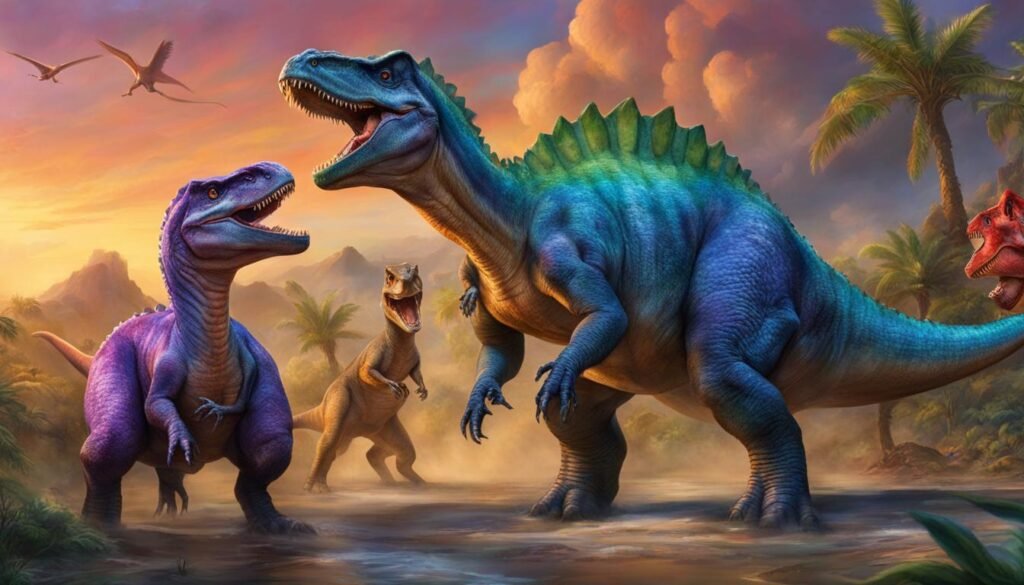
Reproductive Biology of Different Dinosaur Species
Dinosaurs, as a diverse group of ancient creatures, exhibited a wide range of reproductive biology. Each species had its own unique breeding habits and strategies. Let’s explore some fascinating examples:
Ceratopsians
Ceratopsians, such as Triceratops, had display organs like horns and frills. These features were fully developed only in adults, suggesting that they reached reproductive maturity before reaching their full adult size. This indicates that ceratopsians had a relatively shorter reproductive period compared to other dinosaurs.
Sauropods
Sauropods, like Apatosaurus, were believed to have laid large numbers of eggs in a single nest. This high reproductive output suggests an r-strategy of reproduction, similar to modern-day “weed species.” It allowed for rapid population growth and dispersal, contributing to the success and longevity of sauropods as a group.
Hadrosaurs
Hadrosaurs, known as duck-billed dinosaurs, provide intriguing insights into dinosaur reproductive biology. Fossil evidence suggests that hadrosaurs nested in both upland and lowland areas, indicating some level of selectivity in their nesting choices. The presence of medullary bone in some female hadrosaurs suggests that they reached reproductive maturity before reaching their maximum growth.
| Dinosaur Species | Reproductive Characteristics |
|---|---|
| Ceratopsians | Reproductive maturity before reaching full adult size |
| Sauropods | High reproductive output with large numbers of eggs per nest |
| Hadrosaurs | Reproductive maturity before reaching maximum growth, selective nesting behavior |
These examples highlight the diverse breeding habits and reproductive biology of different dinosaur species. While we have uncovered many intriguing insights, there is still much to learn about the intricacies of dinosaur reproduction. Ongoing research and new discoveries will continue to shape our understanding of these ancient creatures and their fascinating reproductive strategies.
Dinosaur Reproductive Biology: Gender Differences and Breeding Habits
When it comes to dinosaur reproductive biology, there is growing evidence to suggest that gender differences played a significant role in their breeding habits. Morphological variations in certain species, such as size and the presence of specific features like head crests or domed heads, have been proposed as indicators of different sexes. For instance, in the case of the Parasaurolophus, it is hypothesized that males had elaborate head crest structures, while females had smaller crests or none at all. These differences in appearance may have been used in courtship displays or as a way to establish dominance within their social groups.
Identifying the sex of dinosaurs based solely on skeletal remains is challenging, and researchers are continuously working to develop new methods to determine gender. While variations in morphology provide some insights, the presence of medullary bone in female dinosaurs has been a significant discovery. This specialized bone, similar to that found in modern-day birds, is associated with egg production and is only present in females during the reproductive period. The presence of medullary bone in certain dinosaur fossils provides concrete evidence of their reproductive status.
The Challenge of Identifying Males
While the identification of female dinosaurs through the presence of medullary bone is relatively straightforward, identifying males remains more elusive. The absence of specific features or reproductive organs that clearly distinguish males poses a significant challenge. However, recent studies have suggested that the size and robustness of certain individuals may indicate a higher likelihood of them being male. Additionally, comparisons with living relatives, such as crocodiles and birds, can provide some insights into potential male characteristics based on their reproductive biology.
“Identifying the sex of dinosaurs based solely on skeletal remains is challenging, and researchers are continuously working to develop new methods to determine gender.”
Continued Research and Discoveries
Despite the challenges, ongoing research and new discoveries are shedding more light on the gender differences in dinosaur reproductive biology. Advances in techniques such as microstructural analysis and isotopic analysis provide valuable tools in studying dinosaur bones and uncovering important details about their reproductive strategies. By examining the microstructure of bone tissue and analyzing isotopes, researchers can gain insights into growth rates, age at sexual maturity, and potential gender differences within dinosaur populations.
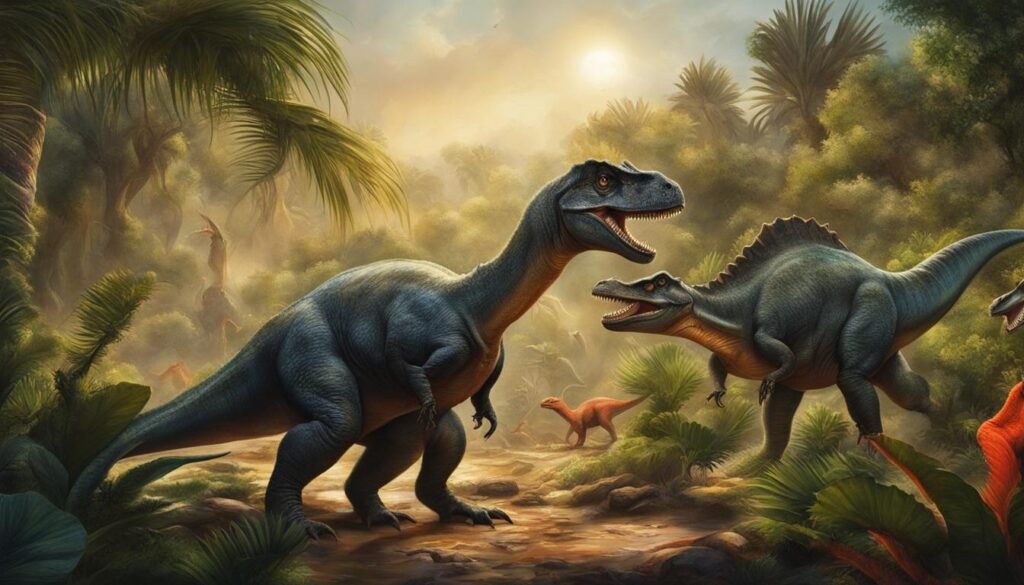
As our understanding of dinosaur reproductive biology continues to evolve, unraveling the mysteries of their breeding habits remains a fascinating area of scientific exploration. By combining evidence from fossil records, comparative studies, and advanced analytical techniques, researchers are slowly piecing together the intricate details of how dinosaurs reproduced and established gender roles within their species. Each new discovery brings us closer to a comprehensive understanding of the reproductive strategies that contributed to the success and diversity of these ancient creatures.
Dinosaur Reproductive Timing
Dinosaurs had unique reproductive biology, and their timing of reproduction is a subject of scientific exploration. It is believed that some dinosaurs reproduced before reaching full adult size. Female dinosaurs had specialized tissues high in calcium within their hollow bones, indicating their capability to reproduce before reaching their maximum growth. Fossil evidence of brooding nests also suggests that dinosaurs continued to grow while taking care of their eggs. However, the exact mechanisms and factors regulating the reproductive timing in dinosaurs are still not fully understood.
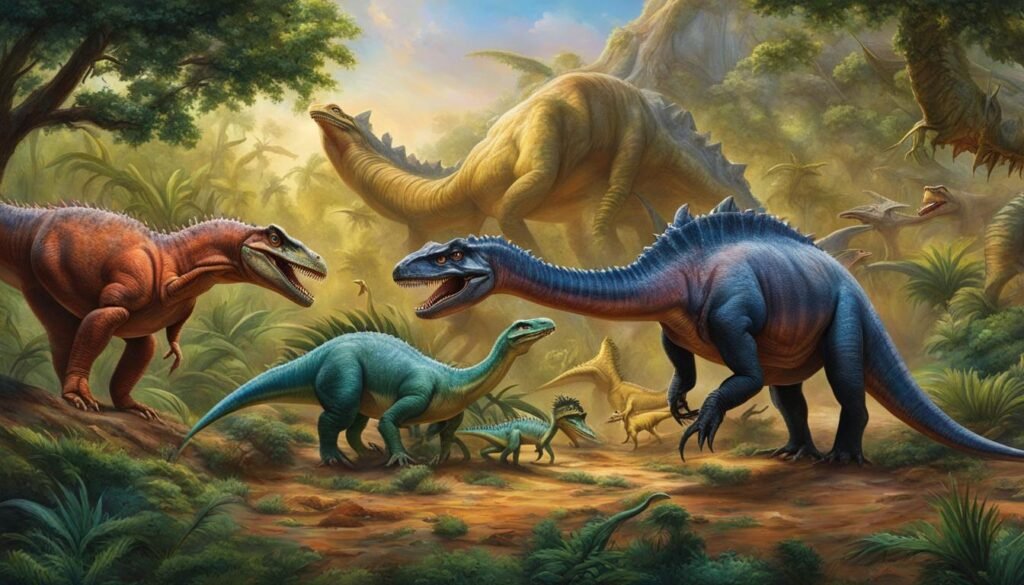
In addition to the timing of reproduction, dinosaur breeding habits also varied among different species. Some dinosaurs, like sauropods, were believed to have laid large numbers of eggs in a single nest, indicating a high reproductive output. Other dinosaurs, such as hadrosaurs and ceratopsians, reached reproductive maturity before reaching full adult size, as suggested by the development of their display organs. The detailed breeding habits and reproductive biology of dinosaurs continue to be the focus of research by paleontologists.
Understanding the reproductive timing and breeding habits of dinosaurs provides valuable insights into their biology and behavior. It helps us piece together the puzzle of how these prehistoric creatures ensured the survival and reproduction of their species. Further investigations and discoveries in the field of dinosaur reproductive biology will contribute to expanding our knowledge of these fascinating ancient animals.
Reproductive Strategies and Population Dynamics in Dinosaurs
The reproductive strategies of dinosaurs played a significant role in their population dynamics and overall success as a group. Similar to modern-day “weed species,” dinosaurs employed an r-strategy of reproduction, characterized by high reproductive output and rapid growth rates. These strategies allowed for rapid population growth and dispersal, contributing to the longevity of dinosaurs on Earth.
The evolution of dinosaur reproduction included the development of unique display organs, such as crests, frills, and horns, which were used in courtship rituals. These elaborate display features helped attract mates and compete with rivals within the species. The courtship behavior of dinosaurs, although not fully understood due to the lack of fossilized soft tissues, likely involved a combination of visual displays, movements, and vocalizations.
“The reproductive strategies of dinosaurs, characterized by high reproductive output and rapid growth rates, allowed for rapid population growth and dispersal.”
The large size and unique display organs of dinosaurs would have played a crucial role in sexual competition and mate selection. Males may have used their impressive displays to attract females and establish dominance within their species. This selection process likely influenced the evolution of dinosaur reproductive strategies, driving the development of larger display structures and behaviors that ensured successful reproduction.
While much progress has been made in understanding the reproductive strategies of dinosaurs, there is still ongoing scientific investigation to uncover further insights. By studying the evolution of dinosaur reproduction, scientists gain valuable knowledge about the biology, behavior, and population dynamics of these fascinating ancient creatures.
| Dinosaur Group | Reproductive Strategy | Display Organs | Population Dynamics |
|---|---|---|---|
| Sauropods | High reproductive output; laying large numbers of eggs | Not fully developed until reaching full adult size | Rapid population growth and dispersal |
| Hadrosaurs | Parental care after hatching | Elaborate head crests; possible vocalizations | Growth and population influenced by parental care |
| Ceratopsians | Reproductive maturity before full adult size | Intricate frills and horns; visual displays | Population dynamics linked to reproductive timing |
Conclusion
The reproductive strategies of dinosaurs were fascinating and varied, offering a glimpse into the unique world of dinosaur reproduction. From egg-laying patterns to elaborate courtship displays, dinosaurs evolved a range of behaviors to ensure the continuation of their species.
By studying the reproductive strategies of dinosaurs, scientists gain valuable insights into their biology and mating behaviors. The presence of medullary bone in female dinosaurs, similar to that found in modern-day birds, points to egg-laying as their primary mode of reproduction. However, the exact details of dinosaur mating behavior are still being deciphered.
Dinosaur reproductive biology was influenced by numerous factors, including nesting behavior, courtship rituals, and even population dynamics. Some dinosaurs, like hadrosaurs, created nesting grounds and potentially provided parental care to their offspring. Others evolved elaborate display organs, such as crests and frills, for courtship purposes.
As our understanding of dinosaur reproduction continues to evolve, further research and discoveries promise to shed more light on the remarkable reproductive strategies of these ancient creatures. The study of dinosaur reproduction not only provides us with a glimpse into the past but also deepens our appreciation for the diversity of life on Earth.

